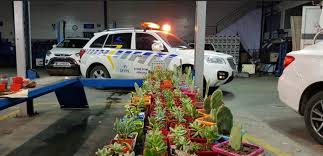
Vehicles have been an integral part of human civilization for centuries, revolutionizing the way we travel, transport goods, and connect Mietwagen auf Fuerteventura . From the earliest carts pulled by horses to modern electric vehicles, the evolution of transportation is a testament to human ingenuity and technological advancement.
1. Historical Overview
Early Vehicles
The first known vehicles appeared around 3500 BC in Mesopotamia, primarily used for transporting goods. These primitive carts were made of wood and typically drawn by animals. As civilizations advanced, so did vehicle design, with the introduction of wheels, which significantly improved mobility.
The Age of Steam
The 18th and 19th centuries marked a pivotal point in vehicle evolution with the advent of the steam engine. This innovation led to the creation of steam-powered trains and automobiles, transforming transportation into a faster and more efficient means of moving people and goods.
The Internal Combustion Engine
The late 19th century saw the development of the internal combustion engine, which powered the first gasoline-powered vehicles. Karl Benz is often credited with creating the first true automobile in 1885. This invention laid the foundation for the automotive industry as we know it today.
2. Types of Vehicles
2.1 Land Vehicles
- Cars: Personal vehicles designed for passenger transportation, ranging from compact cars to SUVs.
- Trucks: Larger vehicles designed for transporting goods, including pickup trucks and heavy-duty trucks.
- Buses: Public transport vehicles designed to carry multiple passengers, often on scheduled routes.
- Motorcycles: Two-wheeled vehicles that offer a more agile and compact form of transportation.
2.2 Water Vehicles
- Boats: Smaller watercraft used for recreation, fishing, or transportation on rivers and lakes.
- Ships: Larger vessels designed for ocean travel, including cargo ships, cruise ships, and naval vessels.
2.3 Air Vehicles
- Airplanes: Aircraft designed for transporting passengers and cargo over long distances.
- Drones: Unmanned aerial vehicles used for various purposes, including photography, surveillance, and delivery services.
3. The Impact of Vehicles on Society
3.1 Economic Growth
The transportation sector plays a crucial role in the global economy. Vehicles facilitate trade by enabling the efficient movement of goods across long distances, contributing to economic growth and job creation.
3.2 Urban Development
As cities expand, vehicles have influenced urban planning. Road networks, highways, and public transport systems are designed to accommodate increasing vehicular traffic, shaping the layout and accessibility of urban areas.
3.3 Social Connectivity
Vehicles have enhanced social interactions by making it easier for people to visit family and friends, commute to work, and engage in recreational activities. The rise of ride-sharing services has further transformed how people perceive transportation.
4. Environmental Considerations
4.1 Pollution and Climate Change
The transportation sector is a significant contributor to air pollution and greenhouse gas emissions. Traditional vehicles powered by fossil fuels release harmful pollutants that affect air quality and contribute to climate change.
4.2 Sustainable Alternatives
In response to environmental concerns, the automotive industry is shifting toward electric and hybrid vehicles. These alternatives produce fewer emissions and are increasingly seen as the future of transportation.
4.3 Public Transport Initiatives
Many cities are investing in public transportation systems to reduce the reliance on personal vehicles, which helps lower traffic congestion and pollution. Innovations like electric buses and light rail systems are becoming more common.
5. The Future of Vehicles
5.1 Autonomous Vehicles
The development of self-driving cars represents a significant leap forward in vehicle technology. These vehicles have the potential to enhance safety, reduce traffic congestion, and improve accessibility for those unable to drive.
5.2 Connectivity and Smart Technology
Modern vehicles are increasingly equipped with advanced technology, including GPS, infotainment systems, and connectivity features. This trend is expected to continue, making vehicles more user-friendly and efficient.
5.3 Alternative Fuels
Research into alternative fuels, such as hydrogen and biofuels, is ongoing. These options may provide more sustainable energy sources for vehicles, further reducing the environmental impact of transportation.
Conclusion
Vehicles have profoundly shaped human society, influencing everything from economics to social interactions. As we move forward, the challenge lies in balancing the benefits of mobility with the need for sustainability. With ongoing advancements in technology and a growing emphasis on environmental responsibility, the future of vehicles promises to be both exciting and transformative.